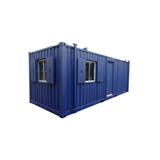Residential building, commercial and industrial construction and engineering construction are at different stages of the cycle – which affects the overall industry outlook, according to Master Builders.
The return to positive conditions implicit in the forecasts comes after an unusually long period of weakness.
However, subdued prospects for many parts of non-residential construction, particularly a continuing fall-back in resources sector related engineering construction, means that overall the building and construction industry conditions faces headwinds over the forecast period. Indeed the current economic climate presents downside risks that may impede the timing and strength of the forecasts.
Non-residential building
Following a bleak three years, non-residential building bounced back in 2013-14 with growth estimated at 5.9 per cent in real terms.
The different non-residential construction sub-sectors are at different stages of the cycle, some are still caught in the tail end of prolonged periods of downturn, some are gaining confidence, while others face decline after experiencing a period of extremely buoyant conditions.
As a result, non-residential construction overall may not lift appreciably over the next three years due to weakness in some construction sub-sectors sectors offsetting growth in others. For example the continued waning of mining related engineering construction.
Commercial and industrial construction sub-sectors are forecast to experience growth. Education and institution related building will decline after experiencing some recent growth and engineering construction will continue to feel the effects of fading resources related infrastructure investment.
The value of total non-residential work done over the period 2016-17 is expected to lift somewhat from the 2014-15 period to be equal to around $36 billion. Higher than pre-GFC levels but below the stimulus driven peak in 2010-11.
New South Wales is predicted to lead the way in non-residential construction with growth areas including industrial, retail, office and accommodation building.
Tasmania is another positive story, with its non-residential construction sector beginning to bounce back after a dismal few years.
Residential building
The value of residential building work done is set to grow strongly over the next three years, after a strong pick-up in 2013-14.
The value of residential work done is forecast to grow from $51 billion in 2013-14 to $68 billion in 2016-17.
The number of dwelling starts is predicted to exceed 200,000 during the forecast timeframe. The underlying assumption is that interest rates will remain at low levels and continue the process of unleashing unmet pent up demand from the previous decade where supply failed to match strong population growth.
The stronger performing states are to be New South Wales, Queensland, South Australia and Tasmania, albeit from a low base.
Despite the attention paid to the upturn in residential building, it remains in its early stages and the challenge for policy makers is to address the housing undersupply by tackling inefficiencies and impediments that is a major cause of the shortfall.
Engineering construction
The engineering construction sector continues easing back from the very favourable conditions created by the intense investment phase of the resources boom, as evidenced by its estimated six per cent decline in 2013-14 following the decade long boom.
In this context, engineering construction is predicted to fall by nearly 20 per cent in real terms over the next three years, from $122 billion in 2012-13 to $102 billion in 2015-16.
Nevertheless, the forecast fall back in activity in the Northern Territory, Western Australia and Queensland follows boom conditions and will remain at high levels.
New South Wales Victoria and Tasmania look set to particularly benefit from stronger infrastructure spending.
In summary
The forecasts are set against the background of the economy growing below trend as it re-balances following the peak of mining related infrastructure investment with the high dollar and relatively soft labour market working against rapid transition.
Nevertheless, those states and territories most affected by waning mining related construction such as Western Australia, Queensland and the Northern Territory are forecast to benefit from strong growth in residential construction.
Those less exposed to resources related residential construction including New South Wales, Victoria and Tasmania have solid overall building and construction outlooks.
- Suppliers
- New to IndustrySearch? Book a Demo
- Advertise with us
- Login
- Email Marketing
- Buyers
- Get Quotes
- Articles & Ideas
- Login
- Subscribe to newsletter
- My Details
- Get Quotes
- Automation & Control
- Automotive Workshop Equipment
- Cleaning Equipment
- Construction & Heavy Machinery
- Conveyor Systems & Components
- Cranes & Hoists
- Electrical & Power Generation Equipment
- Electronic Components
- Farming & Agriculture
- Food & Beverage Processing
- Forklifts & Attachments
- Hydraulic & Pneumatic Equipment
- Industrial Materials, Tools & Components
- Industrial Pumps
- IT Hardware & Industrial Computing
- IT Software & Applications
- Laboratory Equipment & Instruments
- Manufacturing & Industrial Equipment
- Material Handling & Lifting
- Metalworking & Machining
- Mining Equipment & Machinery
- Packaging & Labelling Machinery
- Pallet Management
- Personal Protective Equipment
- Security & Surveillance
- Test & Measurement
- Transport Equipment
- Trucks & Trailers
- Warehouse Storage & Racking
- Waste & Environmental Management
- Welding Machines & Accessories
- Woodworking & Joinery Machines
- Workplace Equipment
- Workplace Safety Equipment
- Get Quotes
- Automation & Control
- Automotive Workshop Equipment
- Cleaning Equipment
- Construction & Heavy Machinery
- Conveyor Systems & Components
- Cranes & Hoists
- Electrical & Power Generation Equipment
- Electronic Components
- Farming & Agriculture
- Food & Beverage Processing
- Forklifts & Attachments
- Hydraulic & Pneumatic Equipment
- Industrial Materials, Tools & Components
- Industrial Pumps
- IT Hardware & Industrial Computing
- IT Software & Applications
- Laboratory Equipment & Instruments
- Manufacturing & Industrial Equipment
- Material Handling & Lifting
- Metalworking & Machining
- Mining Equipment & Machinery
- Packaging & Labelling Machinery
- Pallet Management
- Personal Protective Equipment
- Security & Surveillance
- Test & Measurement
- Transport Equipment
- Trucks & Trailers
- Warehouse Storage & Racking
- Waste & Environmental Management
- Welding Machines & Accessories
- Woodworking & Joinery Machines
- Workplace Equipment
- Workplace Safety Equipment
Trusted by 1.4 million Australian industrial buyers
Buyers
- Discover products & solutions
- Login
- Subscribe To Newsletter
- Browse All Products
- Read Articles
Suppliers
Advertise
- Promote your products & solutions
- New to IndustrySearch? Book a Demo
- Login / Forgot Password
- Advertise Your Products
- Success Stories
- Email Marketing
- Suppliers
- Advertise with us
- Login
- Email Marketing
- Buyers
- Get Quotes
- Articles & Ideas
- Login
- Subscribe to newsletter
- My Details
Get Quotes
- Automation & Control
- Automotive Workshop Equipment
- Cleaning Equipment
- Construction & Heavy Machinery
- Conveyor Systems & Components
- Cranes & Hoists
- Electrical & Power Generation Equipment
- Electronic Components
- Farming & Agriculture
- Food & Beverage Processing
- Forklifts & Attachments
- Hydraulic & Pneumatic Equipment
- Industrial Materials, Tools & Components
- Industrial Pumps
- IT Hardware & Industrial Computing
- IT Software & Applications
- Laboratory Equipment & Instruments
- Manufacturing & Industrial Equipment
- Material Handling & Lifting
- Metalworking & Machining
- Mining Equipment & Machinery
- Packaging & Labelling Machinery
- Pallet Management
- Personal Protective Equipment
- Security & Surveillance
- Test & Measurement
- Transport Equipment
- Trucks & Trailers
- Warehouse Storage & Racking
- Waste & Environmental Management
- Welding Machines & Accessories
- Woodworking & Joinery Machines
- Workplace Equipment
- Workplace Safety Equipment
Get Quotes
- Automation & Control
- Automotive Workshop Equipment
- Cleaning Equipment
- Construction & Heavy Machinery
- Conveyor Systems & Components
- Cranes & Hoists
- Electrical & Power Generation Equipment
- Electronic Components
- Farming & Agriculture
- Food & Beverage Processing
- Forklifts & Attachments
- Hydraulic & Pneumatic Equipment
- Industrial Materials, Tools & Components
- Industrial Pumps
- IT Hardware & Industrial Computing
- IT Software & Applications
- Laboratory Equipment & Instruments
- Manufacturing & Industrial Equipment
- Material Handling & Lifting
- Metalworking & Machining
- Mining Equipment & Machinery
- Packaging & Labelling Machinery
- Pallet Management
- Personal Protective Equipment
- Security & Surveillance
- Test & Measurement
- Transport Equipment
- Trucks & Trailers
- Warehouse Storage & Racking
- Waste & Environmental Management
- Welding Machines & Accessories
- Woodworking & Joinery Machines
- Workplace Equipment
- Workplace Safety Equipment
Trusted by 1.4 million Australian industrial buyers






-160x160-state_article-rel-cat.png)







-160x160-state_article-rel-cat.png)
-160x160-state_article-rel-cat.png)










